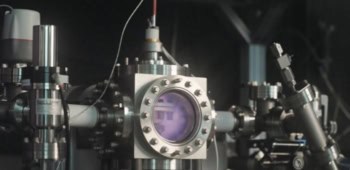Researchers in the US have simulated a magnetic field structure normally produced by the core of a planet, and they say that their design could lead to an efficient way of harnessing nuclear fusion for power generation. The experiment, based at the Massachusetts Institute of Technology (MIT), could also provide an opportunity for space physicists to model the dynamics of planetary magnetic fields and their interaction with charged particles from space.
Nuclear fusion is the powerhouse of stars resulting in the release of vast amounts of energy and the formation of heavier elements – the building blocks of the world we see around us. Some physicists believe that fusion could be harnessed as a source of energy here on Earth by combining deuterium and tritium at high temperatures to form helium-4 plus a neutron. The abundance of its raw materials, the absence of direct carbon dioxide emissions, and the minimal amount of harmful waste are among fusion’s major selling points.
One of the most promising ways of reaching the appropriate temperature and pressure is to use magnetic fields to “confine” plasma – clouds of ionized gas. In the majority of these experiments, plasmas are confined inside large doughnut-shaped vessels called tokamaks. Physicists have so far failed, however, to get more energy out of a tokamak than the energy used to heat and confine the plasma.
Planetary inspiration
In this latest research, Michael Mauel of Columbia University, New York, and his colleagues explore an alternative design inspired by observations of planetary magnetic fields. They suspend a half-ton magnet using powerful electromagnetic fields, and use this to manipulate plasma at 10 million K trapped inside a steel ring structure in an experiment called the Levitated Dipole Experiment, or LDX. The results confirm the researcher’s prediction that random turbulence inside the magnetic chamber increases the density of plasma – a crucial step towards fusion.
This experiment was inspired by space research that has occurred over the past 50 years Michael Mauel, Columbia University
“This experiment was inspired by space research that has occurred over the past 50 years,” says Mauel. “Satellites have explored the magnetospheres of planets such as Earth’s or Jupiter’s and these space observations showed a dipole magnetic field could confine hot ionized matter at high pressure.”
Mauel says that the LDX has distinct benefits over tokamak experiments because the dipole magnetic field is not “twisted or helical” and the plasma is able to circulate from the edge to the hot core without producing a drain on the plasma’s energy. He says that confining fusion with dipole fields would be particularly suitable for so-called “second-generation” fusion fuel, which avoids the need to breed radioactive tritium from lithium, which is the fuel of choice for tokamaks.
Manuel believes that these results could also aid space science. “These results will be of interest to space physicists who study the dynamics of ionized bases confined to outer space by the dipole magnetic field of planets.”
To develop their work, the researchers intend to create hotter plasmas to increase the rate of fusion. They also wish to improve the precision of temperature measurement in their experiment.
This research is published in Nature Physics.



